Table of contents
Yellow corn ( Zea mays ), like wheat, belongs to the grass family (Poaceae) and comes from Central America. Fresh sweet corn ( organic ) can be eaten raw, and the coarser corn kernels are often used to make corn flour and corn semolina.
Use in the kitchen
Corn kernels (organic) are used in the kitchen in various dishes. In Central America and some African countries, corn is considered a staple food. But even in Europe, corn is consumed almost daily, because the food industry often uses the starch contained in the yellow corn kernel as a binding agent in soups, sauces, ice cream, desserts, etc. In the form of sugar, e.g. as glucose syrup, maltose or fructose, corn is contained in drinks or sweets or baked goods.
Can you eat corn raw? You can eat young sweet corn ( Zea mays ) raw, but it is more common to cook, grill or steam corn kernels. The sweet taste of the corn kernel is often combined with hot spices. The yellow corn kernels are also used as a vegetable side dish, in salads, soups, gratins, tacos or vegan chili sin carne ( healthy, oil-free raw vegan chili or raw chili with mushrooms and wild garlic) . Corn gives vegan filled tortillas or dolmas a pleasantly sweet note.
Dried and ground corn kernels are sold as corn semolina or corn flour . They are used to make all kinds of dishes, such as polenta (vegan). Puffed corn is used to make popcorn. Cornflakes made from corn are also available in stores. If fresh, yellow corn is not available, you can use frozen corn orpreserved corn kernels (from a can or jar).
Corn germ oil is produced from the fatty germ of the corn kernel, a vegetable oil that is characterized by its high content of polyunsaturated fatty acids and its content of vitamin E. The oil is used exclusively for cold dishes, as high temperatures destroy the valuable unsaturated fatty acids.
Vegan recipe for corn soup with yellow corn kernels
Ingredients (for 4 people): 800 ml vegetable stock (organic), 4 corn cobs, 100 ml oat cream (vegan), 3 garlic cloves, 1 chili pepper, ½ lime, 1 teaspoon curry powder, a little rapeseed oil, salt ,pepper .
Preparation: Cook the corn on the cob for 15 minutes and then let it cool. Meanwhile, cut the chili into fine rings and the garlic into small pieces. Separate the cooled corn kernels from the stalk. Heat the rapeseed oil in a pan and sauté the chili in it. Add the corn, curry powder and a little salt and fry everything for 5 minutes. Add the vegan cream, vegetable stock and garlic and simmer for 10 minutes at a medium heat. Then puree the soup and season with salt, pepper and lime juice. Enjoy the delicious, vegan corn soup hot.
Vegan recipes with corn kernels (yellow) can be found under the note: " Recipes that have the most of this ingredient ".
| Not only vegans or vegetarians should read this: Vegans often eat unhealthily. Avoidable nutritional errors . |
Shopping - Storage
Corn kernels, yellow, are available in the form of cans and preserves in most supermarkets and major retailers such as Coop, Migros, Denner, Volg, Spar, Aldi, Lidl, Rewe, Edeka, Hofer and Billa . Since corn is a seasonal product, fresh sweet corn ( Zea mays ) not found in supermarkets all year round. During the season from July to October you can buy whole, fresh corn cobs in most supermarkets. You can also often find pre-cooked corn cobs or frozen corn kernels. Some of the various corn products are even available in organic quality. Fresh organic corn cobs can also be found during the season at farmers' markets or in health food stores, organic shops, organic supermarkets (such as Denn's Biomarkt, Alnatura ) or online. When buying fresh corn, the kernels should look plump and shiny and have a rich color. Corn kernels (organic) are not only available in yellow, but also in white, orange, red, blue, purple and black.
The availability of yellow corn kernels varies depending on the size of the store, catchment area, etc. Our recorded food prices for the DA-CH countries can be found above under the ingredient image - and by clicking you can see their development at various suppliers.
Storage tips
Fresh, yellow corn should not be stored for too long, as the sugar quickly turns into starch and the corn kernels develop a floury taste. If stored in the refrigerator, fresh, yellow corn will last for about 1-3 days. Pre-cooked and shrink-wrapped corn cobs will keep for several months. Canned corn lasts the longest. If you eat Zea mays If you grow it in your own garden, you can briefly blanch and freeze the cobs or kernels after harvesting, which extends their shelf life to several weeks.
Ingredients - nutritional values - calories
The ingredients vary depending on the type of corn and the growing area. 100 g of yellow corn kernels (organic) contain 74 g of carbohydrates and have an energy content of 365 kcal. They are quite filling with 7.3 gof fiber and have a fat content of 4.7 g. The 9.4 g of protein in the corn kernels is comparable to the content in barley groats (9.9 g). Spelt is slightly richer in protein (15 g). 1
The 0.62 mg of vitamin B6 (pyridoxine) contained in 100 g covers 44% of the daily requirement. Raw amaranth has a comparable proportion (0.59 mg/100g). The proportion is about twice as high in wheat bran (1.3 mg/100g). 1
The thiamine (vitamin B1 ) content is 0.38 mg/100g. This covers 35% of the daily requirement. Quinoa (0.36 mg/100g) and wheat grains (0.39 mg/100g) contain a similar amount. Grains, such as yeast flakes (41 mg/100g), or pulses and nuts such as wheat germ (1.9 mg/100g) or sunflower seeds (1.5 mg/100g) contain particularly high levels of the vitamin. 1
100 g of yellow corn kernels contain 127 mg of magnesium (34% of the daily requirement). This is comparable to rice flakes (121 mg/100g) or kamut (130 mg/100g). Good sources of magnesium are seeds and nuts such as unpeeled hemp seeds (700 mg/100g). 1
The complete ingredients of corn kernels (yellow), the coverage of the daily requirement and comparison values with other ingredients can be found in our nutrient tables. In the article Nutrients explained you will get a detailed insight into the topic.
Effects on health
Are corn kernels healthy? Zea mays is well tolerated, has a protective effect on the intestinal mucosa and does not contain gluten, which is why eating the yellow kernels is recommended for intestinal diseases (e.g. intestinal dyspepsia, irritable bowel syndrome, chronic colitis, celiac disease). Corn kernels also provide relief for chronic kidney diseases with their mild diuretic effect. The bran in corn can help lower cholesterol levels. Eating corn is also recommended for people with hyperthyroidism, as the kernels slightly inhibit the thyroid and metabolism. Corn can also be used to gain weight if you are underweight. 4 The potassium contained in corn also has a positive effect on blood pressure and the regulation of high blood pressure. 30
Secondary plant substances
Many of the health effects of corn kernels can be attributed to the secondary plant substances they contain. Our article on secondary plant substances provides an overview of the classification of substance groups, their occurrence in foods and possible effects on humans.
Corn kernels contain the following secondary plant substances: 2,3,18
- Isoprenoids: Carotenoids : β-carotene and α-carotene; Xanthophylls: Lutein, Zeaxanthin, β-Cryptoxanthin
- Polyphenols: Phenolic acids: hydroxybenzoic acid (gallic acid, vanillic acid, protocatechuic acid, syringic acid), hydroxycinnamic acid (p-coumaric acid, caffeic acid, sinapic acid); flavonoids: flavonols (quercetin), flavanones (hesperidin), anthocyanidins (cyanidin)
Corn kernels are rich in beta-carotene, which the body converts into vitamin A. Vitamin A plays an important role in the vision process and in the structure and health of tissue. What makes corn yellow? In addition to beta-carotene, the yellow corn kernels contain the natural, orange-yellow pigment zeaxanthin. This pigment, which is a carotenoid, is also said to be good for eye health. Together with the lutein contained in corn, zeaxanthin absorbs high-energy wavelengths of blue light and thus prevents photochemical damage. 2 In addition, both act as antioxidants and reduce oxidative stress by neutralizing free radicals. Is blue corn healthy? Red, purple or blue corn contain anthocyanins, which are responsible for the color of the corn kernels and also act as antioxidants, so the colorful corn varieties are just as healthy as yellow corn. Blue corn kernels are said to be a better source of antioxidants than red corn kernels. 3
The phenol extracts of the dark purple Andean purple corn are even said to have an antimutagenic effect. 3
Dangers - Intolerances - Side effects
As with all types of grain, corn kernels contain phytic acid. In the case of one-sided and unbalanced diets, phytate can impair the bioavailability and thus blood levels of iron, zinc and calcium . 5,31 For people with a balanced and healthy diet, phytic acid is hardly a problem. Long chewing and the gastric juices activate phytases, a group of enzymes that break down phytic acid. Fermenting or sprouting reduces the phytic acid content before consumption. Read more about this in our text Phytic acid or phytate and soaking or sprouting .
The glycemic index of corn varies depending on the variety and method of preparation, which is why different GI values have been published. For fresh corn (without indication of variety) the GI value is 35.33 For cooked, yellow corn the GI value is 56.32 Cooked sweetcorn ( Zea mays saccharata ) has a GI of 72 or 60.32,33 An exception is a study from Indonesia which gave a GI value of 36 for cooked sweetcorn, which seems very low.6 Corn can be classified as a food with a medium to high glycemic index, especially when steamed or boiled. Foods with a high glycemic index lead to a rapid increase in blood sugar, which also increases insulin levels in the blood. In the long term this can lead to insulin resistance and diabetes. The actual blood sugar response depends on various factors, which is why the GI should only be seen as a guideline.
Since Zea mays lacks some essential amino acids, the protein in corn kernels is of unsatisfactory quality. 7 A one-sided diet of corn kernels can lead to the vitamin deficiency disease pellagra. This is caused by a lack of niacin (vitamin B3 ). 25 To compensate for this, a combination with whole grains, pulses or green leafy vegetables is recommended.
For some people who suffer from the rare corn allergy or a cross allergy, corn can cause symptoms. Eating corn kernels when suffering from a corn allergy can lead to headaches, nausea, diarrhea, reddening of the skin, swelling of the mucous membranes, breathing difficulties or circulatory collapse. Those affected should therefore avoid eating products containing corn. Cross allergies to grasses such as wheat, rye, ryegrass or oats are also possible. In a cross allergy, the immune system reacts oversensitively to the same or similar allergens in different foods. An allergy to wheat flour, for example, can therefore trigger a cross allergy to corn flour . 8
Folk medicine - natural healing
In folk medicine, corn stigmas (also known as corn beard or corn hair) are used in slimming diets due to their dehydrating effect. 9 In naturopathy, corn silk is used as a diuretic and against kidney stones and bladder stones, edema, rheumatic complaints and obesity. 10
Ecological footprint - animal welfare
The ecological footprint of a food depends on various factors. The type of agricultural production (conventional vs. organic), seasonal, regional or domestic production or import by truck, ship or plane, different types of packaging and whether the goods are fresh or frozen all play a decisive role. 19
Corn cobs have a carbon footprint of 0.82 kg CO 2 eq/kg. 20 Canned corn kernels have an estimated carbon footprint of 1.2 kg CO 2 eq/kg. 19
The water footprint for producing 1 kg of corn kernels is 1314 litres of water. 21
For detailed explanations of various sustainability indicators (such as ecological footprint, CO2 footprint, water footprint), see our article: What does the ecological footprint mean?
Demand for corn is high. The result is extreme monocultures that damage both the environment and the plants themselves. Growing the same plants on the same fields without crop rotation also has a damaging effect on yields and turns the fields into a paradise for weeds and pests. Farmers are therefore increasingly using pesticides and herbicides, which then accumulate in the corn cobs. 13 The aim is to counteract the high use of pesticides with the highly controversial genetically modified corn, known as GM corn. GM corn is a plant whose genetic makeup has been artificially modified. The manipulation of genes is usually aimed at increasing resistance to weeds and pests in order to increase yields and minimize the use of herbicides and pesticides. 14 However, environmental organizations and experts believe that there are ecological and health risks. In addition, genetically modified plants are often not used to combat world hunger, but as animal feed, thereby indirectly boosting the cheap meat industry. A few large corporations in particular benefit from this. Since 2015, 28 member states of the European Union ( EU ) have been able to ban the cultivation of genetically modified plants in their country; many make use of this. For example, only Spain and Portugal have areas under cultivation for genetically modified corn. However, this is declining sharply. 15
We recommend using organic corn and organic corn products because it is grown without the use of chemical pesticides and herbicides. The use of genetically modified corn varieties is also prohibited.
Animal welfare - species protection
The slow growth of corn means that ploughed fields are exposed to wind and weather for several weeks without protection. The rain that often occurs in spring washes important nutrients out of the soil, which impairs soil fertility and pollutes groundwater, streams, rivers and lakes. If corn is grown without ploughing, the corn fields are often victims of weeds that grow faster and more vigorously than the young corn plants. This situation leads to an increased use of chemical pesticides. These in turn have a heavy impact on the environment - especially surface water and groundwater. 22 Various animal species are also affected by pesticides; above all insects such as bees, butterflies and cicadas, whose numbers are declining across Europe. Soil organisms such as earthworms also suffer, 23 but also birds, bats and amphibians. 24
Worldwide occurrence - cultivation
Corn originally comes from Central America. In the 16th century, Columbus brought it from America to Europe. Today's corn is the extreme case of a plant created by man and adapted to his needs and at the same time the grain with the highest yield potential. In Central America there are countless primitive forms of the corn plant. 11 In the middle of the 19th century, tender, sweet sweet corn came onto the market. Corn is now grown all over the world in tropical to temperate zones. In 2022, the USA, China, Brazil, Argentina, India, Mexico, Ukraine, Indonesia, South Africa and Russia were considered the countries with the highest production figures. 26
Cultivation - Harvest
The corn plant grows 1-3 m high and is an annual crop. It has both male flowers (panicles) that are located at the top of the corn plant and female flowers that are located on the leaf axils. The female flowers form long styles (corn beards) that serve to catch pollen carried by the wind. Once the flower is fertilized, a corn cob develops on the cob axils. Depending on the variety, 1 to 3 cobs mature per corn plant. 12 How many kernels are there on a corn cob? A corn cob has between 400 and 600 corn kernels. How is the corn kernel structured? The structure of the corn kernel is as follows: the husk is on the outside, and the endosperm and germ are inside the corn kernel. The structure of the corn cob is comparable to an ear of corn. The corn kernels grow around the thickened main axis - the spindle - and are in turn surrounded by timothy leaves while still on the plant itself. At the top are the long stigma threads (corn beard) responsible for fertilization. 29
Sowing takes place in April to early May. To thrive, the corn plant needs a lot of sun and warmth; ideal temperatures are between 20 and 24 °C. If the temperature rises above 26 °C, yields fall. Temperatures above 30 °C increase the plants' susceptibility to disease. At night, the temperature should not fall below 14 °C. Dry periods during flowering and fertilization lead to poor harvests. Early weed control is important when growing corn. Some countries grow corn in mixed crops, e.g. together with beans, pumpkins and watermelons. Mixed crops prevent the risk of soil erosion, protect the soil from overheating due to sunlight and prevent the soil from solidifying due to rain. The growing season for corn lasts 140 days or longer. Harvesting takes place from July to October using special machines. 11
Further information
Yellow corn ( Zea mays ), like wheat, belongs to the grass family (Poaceae). Corn kernels are a staple food in Central America and some African countries. In the USA and many European countries, however, the yellow kernels are largely fed to animals or used as an energy crop. How much does a kernel of corn weigh? The thousand-grain mass of corn is 200-450 g, depending on the size of the individual kernels. A kernel of corn weighs between 0.2-0.45 g.
A Mexican delicacy is the so-called "Huitlacoche" . This is a parasitic fungus ( Ustilago maydis ) that penetrates the corn kernel and causes corn smut. The infected kernels begin to swell and turn black. The corn kernels are harvested before the fungus has fully matured and formed spores. Together with a little garlic, they make a delicious topping for tacos and quesadillas. Because they are said to taste sweet and mushroom-like, they are also known as "Mexican truffles". 16
There are over 50,000 different types of corn worldwide. Here is a selection of the most well-known types of grain, which are often classified according to their use: 16,27
- Sweet corn (edible corn, vegetable corn): is suitable for consumption and comes in various sizes and colors. The cobs are harvested at the milky stage, before the sugar is converted into starch. The kernels are smooth and round. When pressed, a milky, white liquid comes out of the kernels.
- Baby corn (miniature corn): is a type of sweet corn and is about 10 cm long. It is harvested as an unripe cob, which makes it particularly tender and can be eaten whole. It is often used in wok dishes or pan-fried dishes.
- Corn : used primarily as animal feed or ground into dough and bread. The kernels are coarser than sweetcorn kernels.
- Soft corn : due to its "supple starch" it is easy to process into dough. It is used for making tortillas, among other things.
- Hard corn : The starch is much more brittle, so it is primarily used as animal feed or for corn starch flour.
- Dent corn : is grown mainly in the USA as animal feed. The starch contained in the interior is soft, while the outer shell is hard.
- Popcorn : has a glassy, hard yet thin shell that explodes when popcorn is made (popcorn corn). The corn kernel contains more water than the other types of corn.
- Starch corn : mainly used for flour production.
- Waxy maize : has a small grain and contains a high content of glassy starch (amylopectin).
- Spelt corn : has little importance today.
Alternative names
Corn is also known colloquially as Kurkuruz, Welschcorn (Welschkorn), Turkish wheat or Turkish corn. The short version "Türken" is also possible. In Switzerland, yellow corn is also called Türgge or Törgge. In English, corn kernels are called yellow corn kernels, maize or Indian corn. In Spanish, grain corn is called maiz en grano, in Turkish it is called mısır taneleme or mısır çekirdeği. The Chinese name for corn kernels is 玉米粒料理.
Other applications
Corn is used in Europe not only in the food industry, but also as animal feed. The yellow kernels are also used to produce biofuel and the biofuel E10. To avoid plastic, compostable tableware is made from corn, e.g. eating bowls, drinking cups, cutlery or drinks bottles. Garbage bags, carrier bags, shipping bags, garbage cans, soap dishes or disposable gloves are also made using corn kernels. Work is currently underway on clothing and toys that are to be made from corn. 17 Corn starch is also often a component of powders and tablet bases. 9
Bibliography - 31 Sources
| 1. | USDA United States Department of Agriculture. |
| 2. | O’Hare TJ, Fanning KJ, Martin IF. Zeaxanthin biofortification of sweet-corn and factors affecting zeaxanthin accumulation and colour change. Arch Biochem Biophys. 2015;572:184–187. |
| 3. | Loarca-Piña G, Neri M et al. Chemical characterization, antioxidant and antimutagenic evaluations of pigmented corn. J Food Sci Technol. 2019;56(7):3177–3184. |
| 4. | Pamplona Roger JD. Heilkräfte der Nahrung: Ein Praxishandbuch. Zürich: Advent Verlag; 2006. |
| 5. | Adams CL, Hambidge M et al. Zinc absorption from a low-phytic acid maize. Am J Clin Nutr. 2002;76(3):556–559. |
| 7. | Guo X, Yuan L, Chen H et al. Nonredundant function of zeins and their correct stoichiometric ratio drive protein body formation in maize endosperm. Plant Physiology. 2013;162(3):1359–1369. |
| 8. | Allergiefreie-allergiker de: Maisallergie. |
| 9. | Pahlow M. Das grosse Buch der Heilpflanzen. Nikol Verlag; 2013. |
| 10. | Naturheilkundelexikon de: Mais. |
| 11. | Rehm S, Espig G. Die Kulturpflanzen der Tropen und Subtropen. Stuttgart: Verlag Eugen Ulmer; 1976. |
| 12. | Mein schöner Garten de: Zuckermais. 2022. |
| 13. | Pini U. Das Bio-Food-Handbuch. Ullmann: Hamburg, Potsdam; 2014. |
| 14. | The Royal Society. What is genetic modification (GM) of crops and how is it done? 2016. |
| 15. | Transgen de: Nur Mais, fast nur Spanien: Anbau gentechnisch veränderter Pflanzen in der EU. 2023. |
| 16. | Essen-und-trinken de: Mais: die verschiedenen Sorten. |
| 17. | Planet-wissen de: Lebensmittel Mais. |
| 18. | Siyuan S, Tong L, Liu R. Corn phytochemicals and their health benefits. Food Science and Human Wellness. 2018;7(3):185–195. |
| 19. | Reinhardt G, Gärtner S, Wagner T. Ökologische Fussabdrücke von Lebensmitteln und Gerichten in Deutschland. IFEU Institut für Energie- und Umweltforschung Heidelberg. 2020:1-22. |
| 20. | Concito. Denmark's green think tank. The big Climate Database. Version 1. Corn cob. |
| 21. | Mekonnen MM, Hoekstra AY. The green, blue and grey water footprint of crops and derived crop products. Hydrol. Earth Syst. Sci. 2011;15:1577–1600. |
| 22. | BAFU Bundesamt für Umwelt. Landwirtschaft: Das Dilemma des bodenschonenden Maisanbaus. 2020. |
| 23. | WWF World Wildlife Fund. Pestizide: Wirkung und Gefahren. |
| 24. | NABU (Naturschutzbund Deutschland) e. V. Pestizide im Überblick: Pflanzenschutzmittel und Biozidprodukte. 2020;12:1–8. |
| 25. | Flamm H. Die Pellagra – vor 250 Jahren im Kaisertum Österreich erstmals beschrieben, wurde sie zu einer lebensbedrohenden Endemie in einigen Provinzen. Wien Klin Wochenschr. April 2021;133(1):1–21. |
| 26. | FAO Food and Agriculture Organization of the United Nations. Crops and livestock products. Maize (corn). Production Quantity 2022. |
| 27. | Holtmann Saaten: Maissortentyp und Maissortenwahl 2022. |
| 28. | WWF World Wildlife Fund. Gentechnik: Leben aus dem Labor. 2023. |
| 29. | DMK Deutsches Maiskomitee e.V. Morphologie. |
| 30. | Whelton PK, He J. Health effects of sodium and potassium in humans. Current Opinion in Lipidology. 2014;25(1):75–79. |
| 31. | Schlemmer U, Frølich W, Prieto RM, Grases F. Phytate in foods and significance for humans: Food sources, intake, processing, bioavailability, protective role and analysis. Molecular Nutrition Food Res. 2009;53:330–375. |
| 33. | GI-Handbuch NR. 1 (online). Frischer Mais, Gelber Mais, Gekochter Zuckermais. |

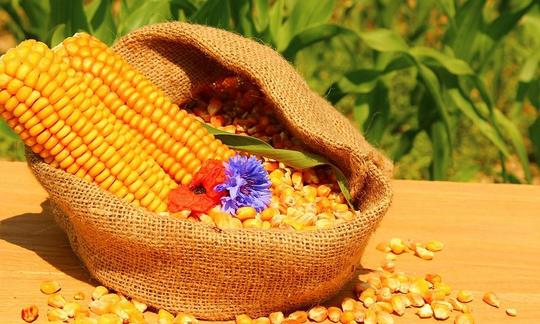

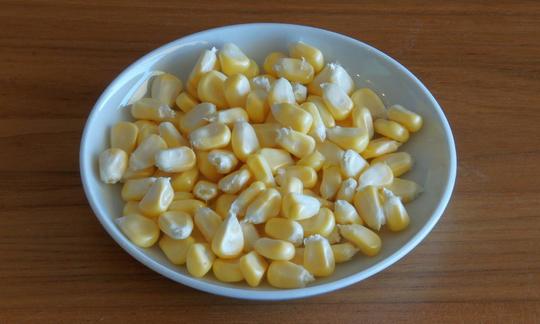

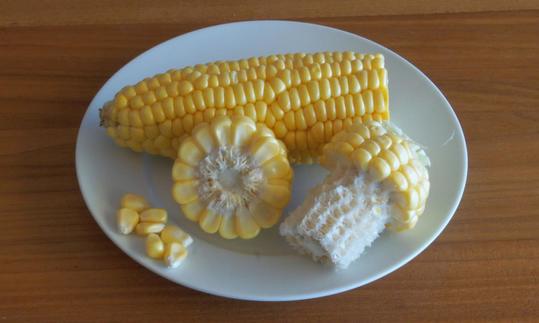

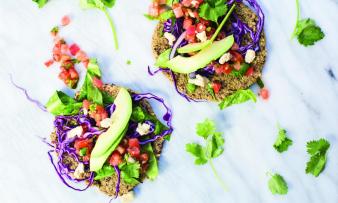
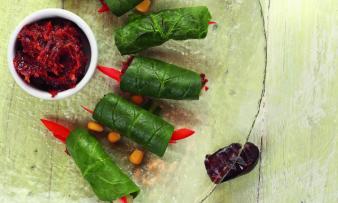
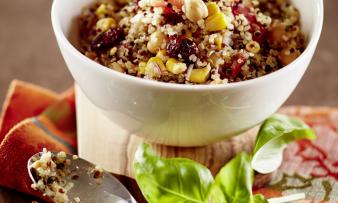
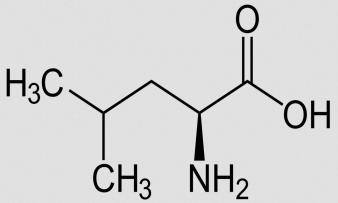

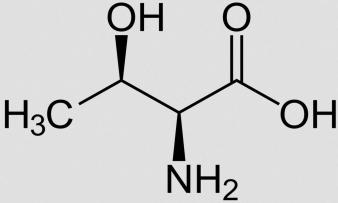


Comments